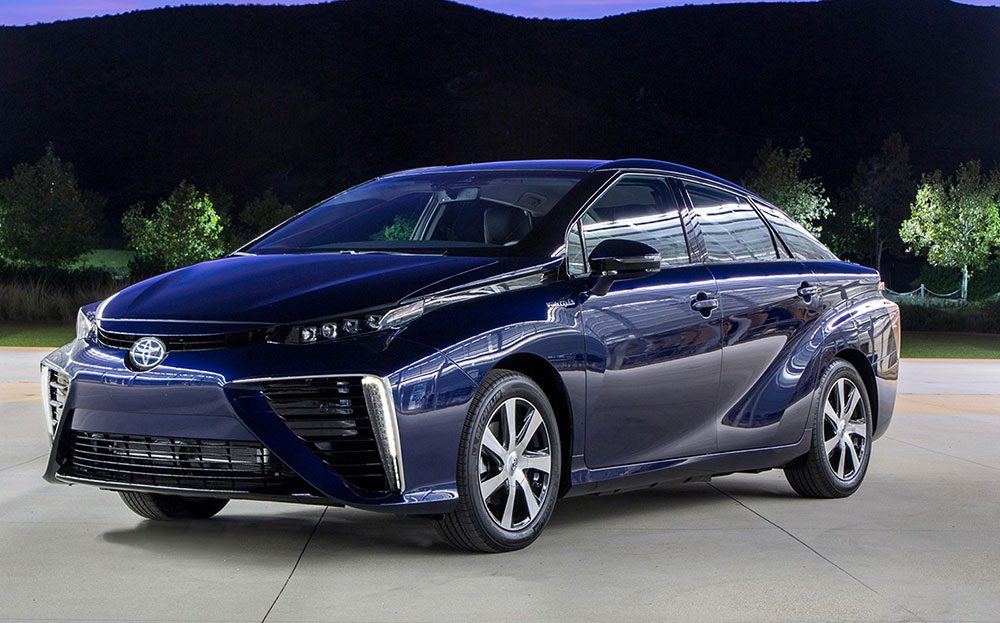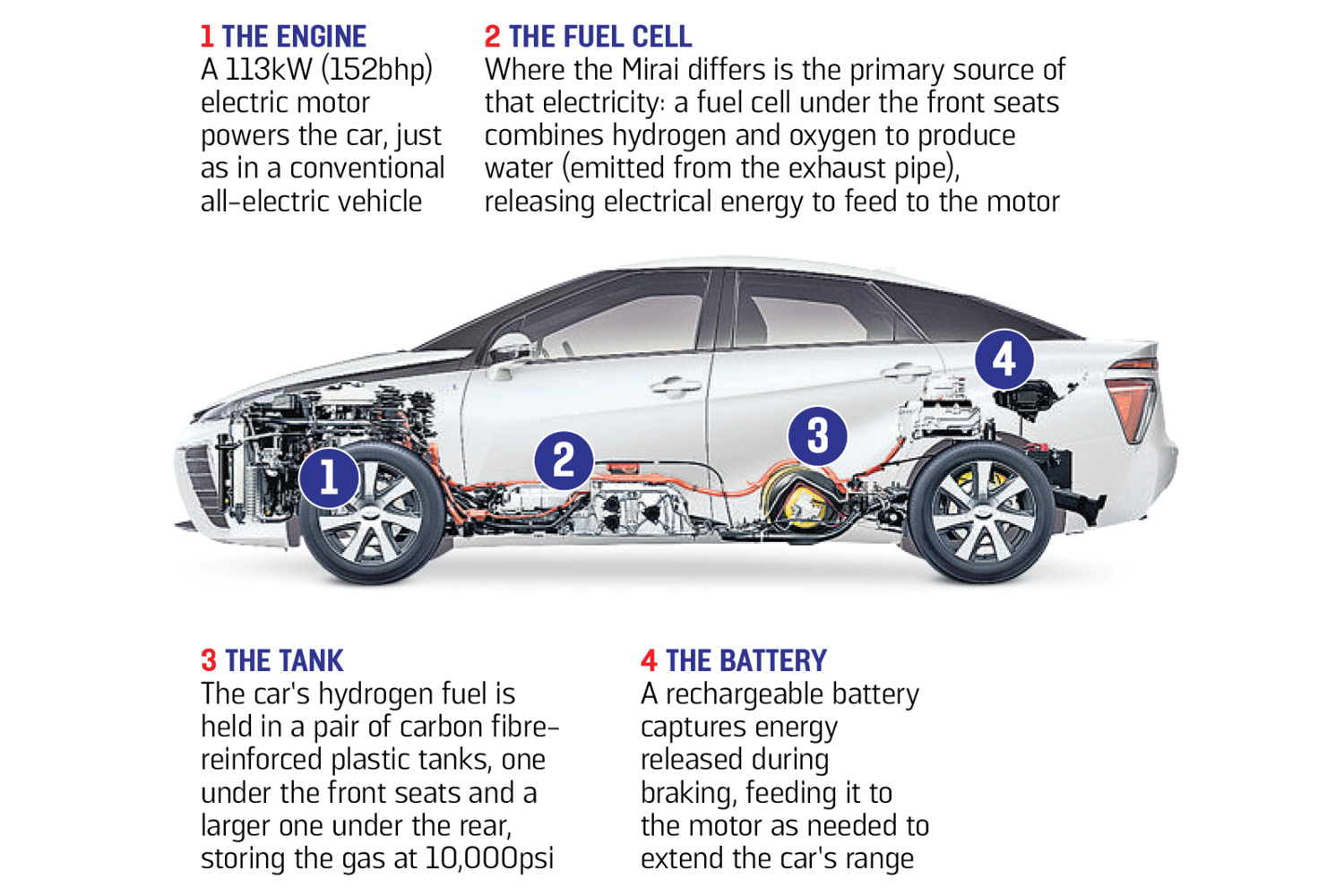Car of the week: Toyota Mirai
Cell, cell, cell: the H-car makes a splash

TYPICAL. YOU wait ages for a hydrogen-powered car to come along and two arrive at once. Following in the slipstream and clouds of water vapour of the Hyundai ix35 Fuel Cell, which we reviewed earlier this month, comes the Toyota Mirai — billed as the first purpose-built fuel-cell car British drivers can buy.
View the used Toyotas for sale on driving.co.uk
Actually, that’s not quite true. You can’t just walk into your local Toyota dealer, hand over the keys to your NOx-belching Volkswagen Golf diesel and sign up to a finance deal on a Mirai. The car is sold out (all 12 examples) this year, despite costing £66,000, or £750 a month for a four-year leasing deal. Toyota says it will produce 700 a year, and 16 will be coming to Britain in 2016.
Unlike the Hyundai, which is essentially a conventional car converted to run on hydrogen, this car has been designed as a fuel-cell vehicle from the ground up. Toyota believes that the days of the internal combustion engine are numbered. That’s why it gambled on hybrid technology in the Prius. And it’s why it has plans for a range of pure-electric micro-cars for cities.
It sees hydrogen-powered cars working well for longer-distance trips: the Mirai has, Toyota says, a driving range of up to 300 miles on a tankful of hydrogen. Unfortunately, putting that claim to the test was impossible: our first test drive was restricted to an hour and a half.
What the Mirai proved in that time is that driving one is little different from driving an electric car. Open the door, settle behind the simplistic dashboard, press the start button, select Drive and ease the throttle pedal down; it pulls away in silence, and there’s just the faintest whine from its single-speed transmission under full acceleration.
With a generous helping of torque, this saintly machine is sprightly enough to spin the front wheels under maximum acceleration, but the whiff of burning rubber is not accompanied by the typical pong of burnt petrol or diesel.
The suspension has been tuned for comfort, and it does a good job of shielding occupants from crumbling roads. It’s a relaxing car to spend time in — unless you hurl it into a corner. Then it ploughs straight on like an oil tanker being asked to turn on the spot.
The instruments are small and hard to read, and its in-car tech is far from cutting edge. In fact the main thrill is the knowledge that you’re piloting a vehicle with a sci-fi powertrain (before you disembark, a button by the steering column is pressed to purge the fuel-cell system of waste water — a satisfying end to any journey).
Toyota can’t kick-start the world’s hydrogen economy single-handedly. More car makers, businesses and governments will need to lend their support before drivers will give serious consideration to owning a hydrogen car. But the Mirai is a significant step on a long journey.
For now, a Tesla Model S or a Porsche Cayenne S E-Hybrid would cost about the same as the Toyota on a leasing deal. Both are a lot more desirable, more luxurious and a great deal better to drive.
2015 Toyota Mirai specifications
- PRICE: £66,000
- POWER: 152bhp
- TORQUE: 247 lb ft
- TRANSMISSION: 1-speed
- ACCELERATION: 0-62mph in 9.6sec
- TOP SPEED: 111mph
- ROAD TAX BAND: A (free)
- RELEASE DATE: Sold out
Search the used Toyota Mirais for sale on driving.co.uk





